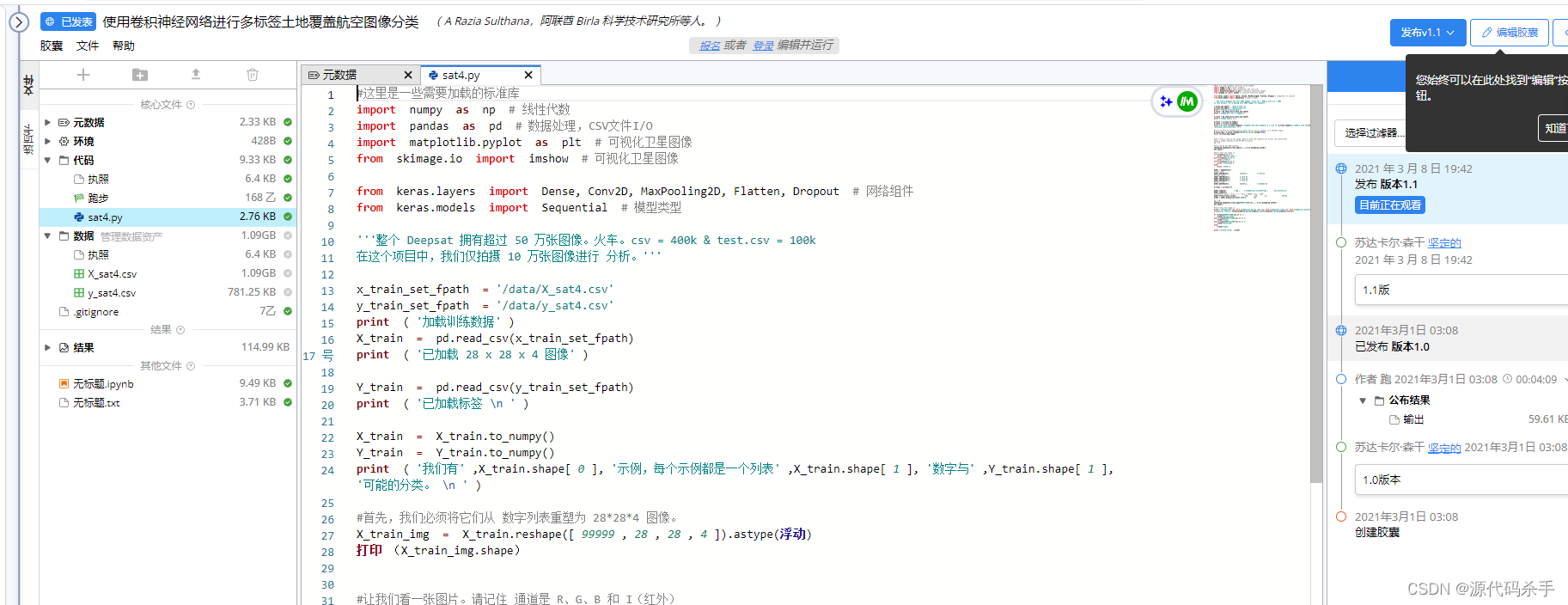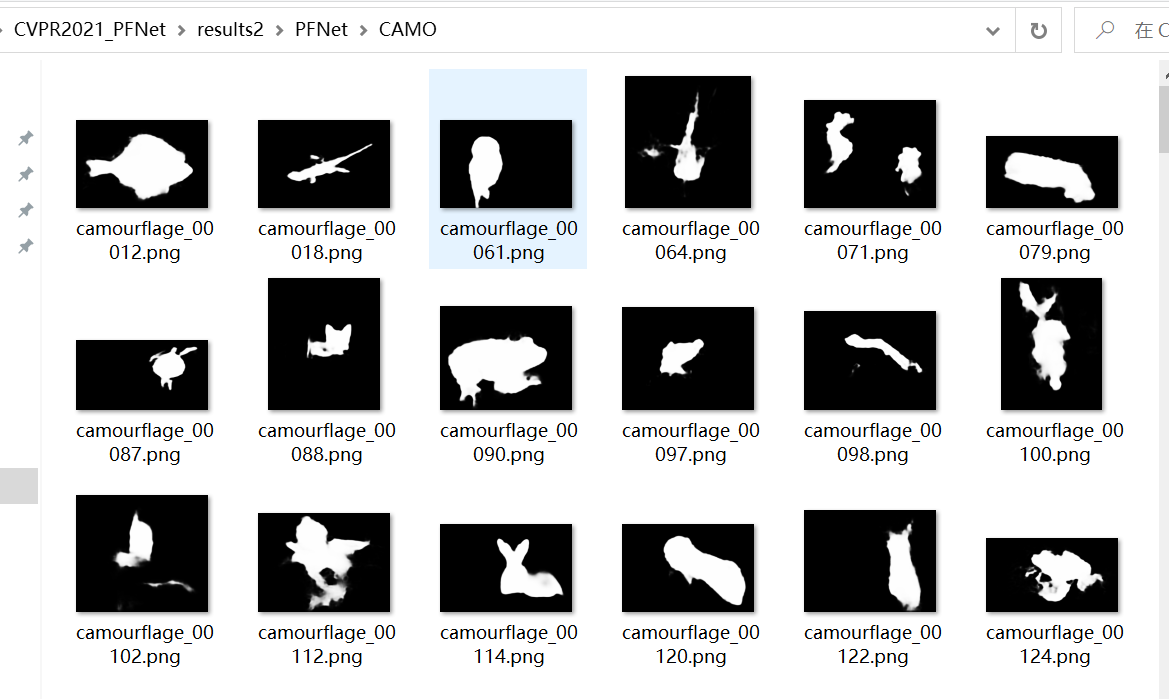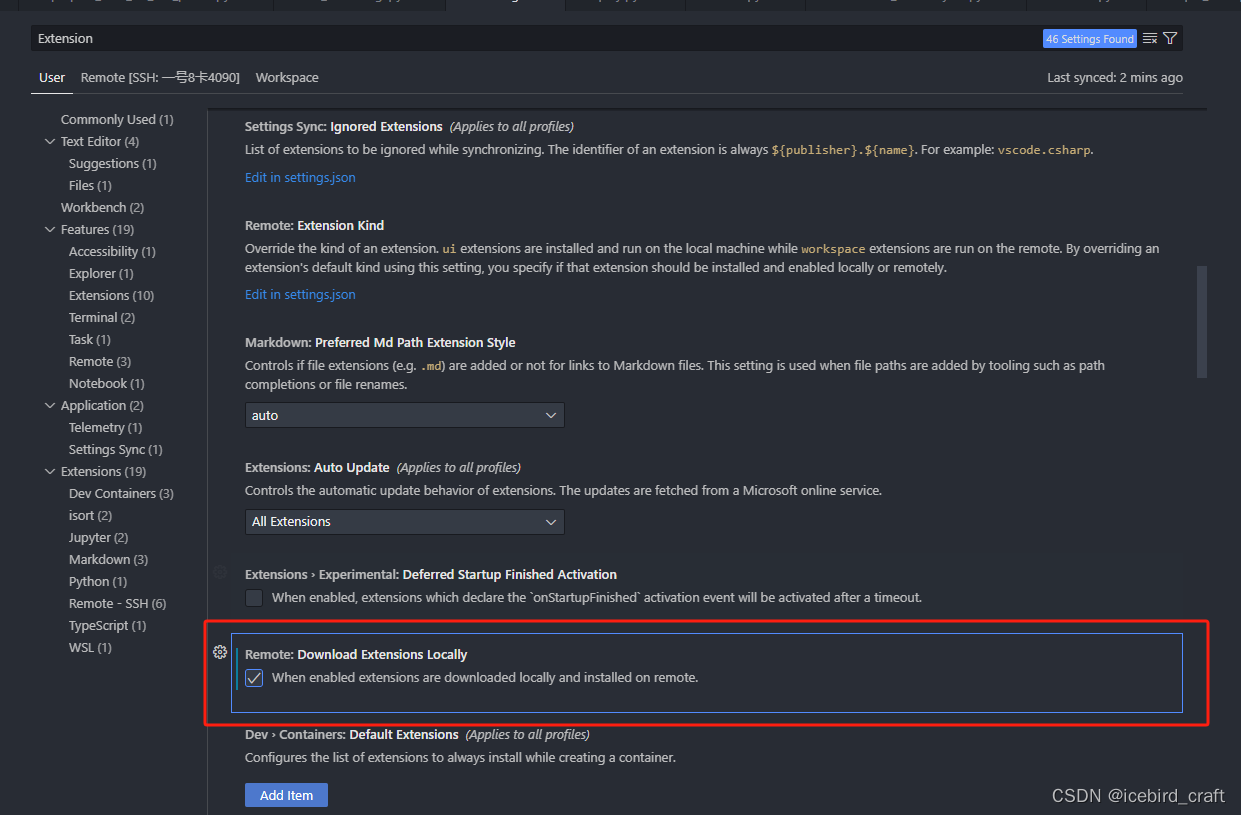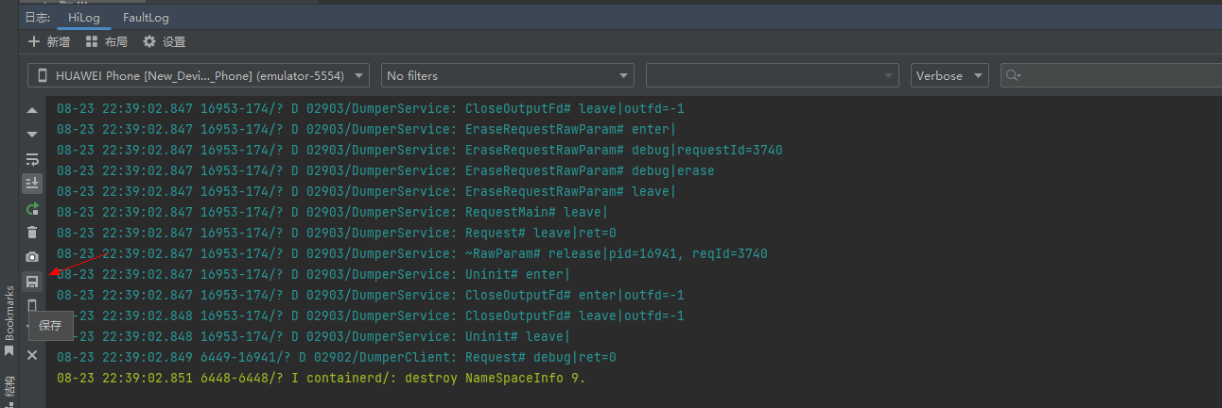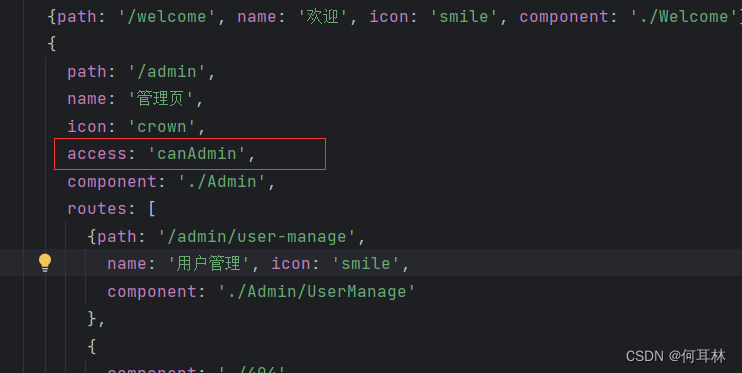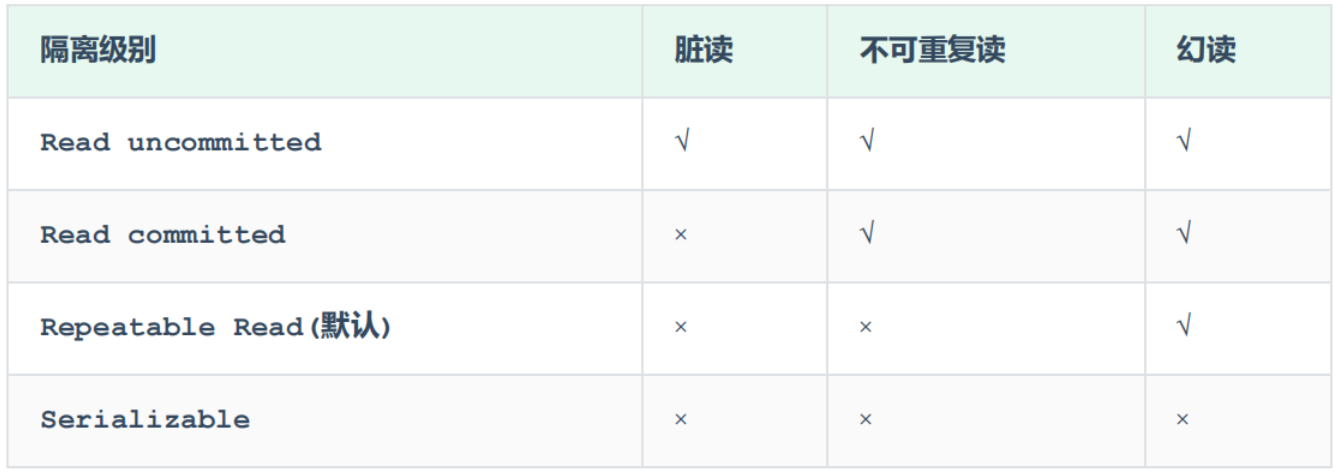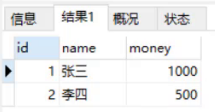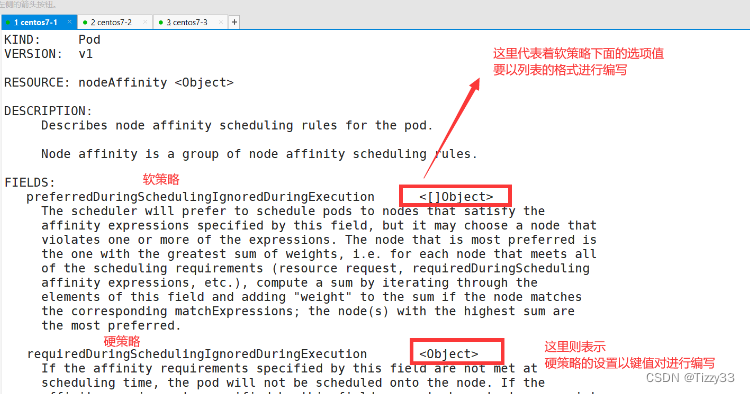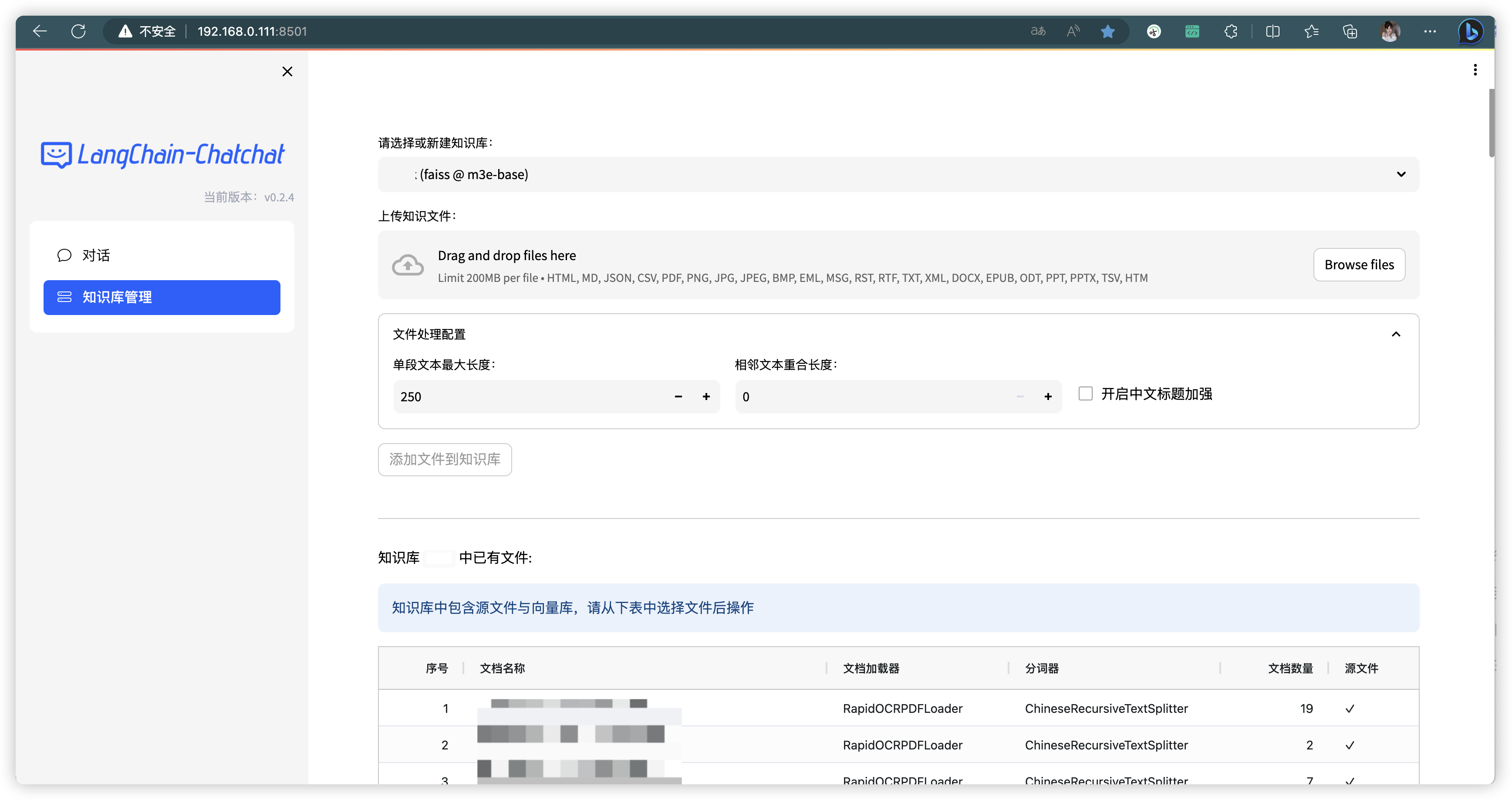✅<1>主页::我的代码爱吃辣
📃<2>知识讲解:Linux——文件系统
☂️<3>开发环境:Centos7
💬<4>前言:是不是只有C/C++有文件操作呢?python,java,php,go ..... 他们都是有文件操作?他们的文件操作一样吗?他们都有文件操作,且根据语言的语法不同,文件操作也是不同的。有没有一种同意的视角,看待所有语言的文件操作呢?
目录
一.回顾C文件IO相关操作
1.C语言文件写入
2.C语言文件读取
3.输出信息到显示器有哪些方法
二.系统文件IO
1.open
2.write
3.close
4.read
三.对比C库与系统调用
四.如何管理文件
1.操作系统如何管理文件
2.进程如何管理文件 ——文件描述符
3.文件描述符的分配规则
三.重定向
1.重定向原理
2.dup2 系统调用
四.理解FILE

一.回顾C文件IO相关操作
1.C语言文件写入
测试代码:
#include <stdio.h>
#include <string.h>
int main()
{
FILE *fp = fopen("myfile", "w");
if (!fp)
{
printf("fopen error!\n");
}
const char *msg = "hello Linux!\n";
const char *msg2 = "hello C++!\n";
int count = 5;
while (count--)
{
// 向文件中写入,
// 参数1:写入的数据C++
// 参数2:写入的字符个数
// 参数3:写入的数据元素的个数
// 参数4:写入的文件结构体指针
fwrite(msg, strlen(msg), 1, fp);
}
int n = 5;
while (n--)
{
// 向文件中写入,
// 参数1:写入的文件结构体指针
// 参数2:格式化写入
fprintf(fp, "[%d]:%s", n, msg2);
}
fclose(fp);
return 0;
}
测试结果:
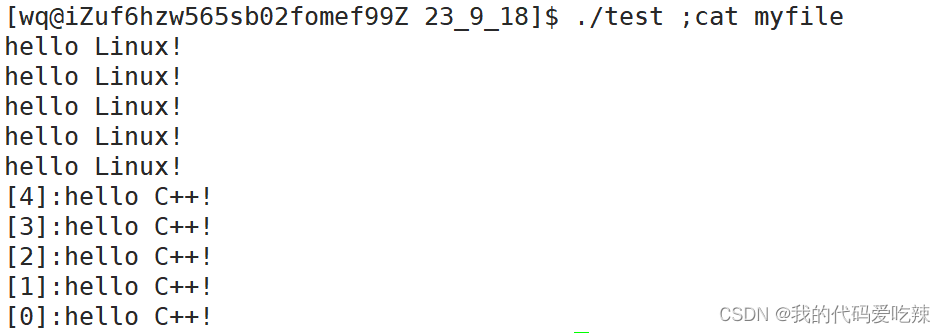
2.C语言文件读取
#include <stdio.h>
#include <string.h>
int main()
{
FILE *fp = fopen("myfile", "r");
if (!fp)
{
printf("fopen error!\n");
}
char buf[1024];
const char *msg = "hello bit!\n";
while (1)
{
// 注意返回值和参数,此处有坑,仔细查看man手册关于该函数的说明
size_t s = fread(buf, 1, strlen(msg), fp);
if (s > 0)
{
buf[s] = 0;
printf("%s", buf);
}
if (feof(fp))
{
break;
}
}
fclose(fp);
return 0;
}
3.输出信息到显示器有哪些方法
#include <stdio.h>
#include <string.h>
int main()
{
const char *msg = "hello fwrite\n";
// 1.fwrite
fwrite(msg, strlen(msg), 1, stdout);
// 2.printf
printf("hello printf\n");
// 3.fprintf
fprintf(stdout, "hello fprintf\n");
return 0;
}C库常见IO接口:
// 1.默认向显示器格式化打印
int printf(const char *format, ...);
// 2.向指定的文件中格式化输入
int fprintf(FILE * stream, const char *format, ...);
// 3.向指定的空间中格式化输入
int sprintf(char *str, const char *format, ...);
// 4.向指定的空间中格式化输入指定个数字符
int snprintf(char *str, size_t size, const char *format, ...);总结:
- C默认会打开三个输入输出流,分别是stdin, stdout, stderr
- 仔细观察发现,这三个流的类型都是FILE*, fopen返回值类型,文件指针
二.系统文件IO
操作文件,除了上述C接口(当然,C++也有接口,其他语言也有),我们还可以采用系统接口来进行文件访问,先来直接以代码的形式,实现和上面一模一样的代码:
1.open
隆重介绍一个系统调用:

#include <sys/types.h>
#include <sys/stat.h>
#include <fcntl.h>
int open(const char *pathname, int flags);
int open(const char *pathname, int flags, mode_t mode);pathname: 要打开或创建的目标文件
flags: 打开文件时,可以传入多个参数选项,用下面的一个或者多个常量进行“或”运算,,就是一种位图结构,flags参数:
- O_RDONLY: 只读打开
- O_WRONLY: 只写打开
- O_RDWR : 读,写打开
- 这三个常量,必须指定一个且只能指定一个
- O_CREAT : 若文件不存在,则创建它。需要使用mode选项,来指明新文件的访问权限
- O_APPEND: 追加写
返回值:
- 成功:新打开的文件描述符
- 失败:-1
2.write

#include <unistd.h>
ssize_t write(int fd, const void *buf, size_t count);
参数介绍:
- fd:要写入的文件描述符。
- buf:要写入的字符串。
- count:写入的个数。
3.close
#include <unistd.h>
int close(int fd);关闭指定的文件描述符的文件。
测试代码:
#include <stdio.h>
#include <string.h>
#include <sys/types.h>
#include <sys/stat.h>
#include <fcntl.h>
#include <unistd.h>
int main()
{
// fd:文件描述符
// mufile:打开的文件名
// O_WRONLY :写方式 | O_CREAT:没有该文件就创建 | O_APPEND : 追加写入
int fd = open("myfile", O_WRONLY | O_CREAT | O_APPEND, 0666);
if (fd == -1)
{
perror("open");
}
int count = 5;
char *msge = "hello C++ and Linux\n";
while (count--)
{
ssize_t n = write(fd, msge, strlen(msge));
if (n == -1)
{
perror("write:");
}
}
close(fd);
return 0;
}
测试结果:

4.read
#include <unistd.h>
ssize_t read(int fd, void *buf, size_t count);
参数:
- fd:读取文件的文件描述符
- buf:存储读取出的数据的缓冲区
- count:最大读取个数
返回值:
- 读取成功:返回读取的字节数。
- 读取失败:返回-1.
测试代码:
#include <stdio.h>
#include <string.h>
#include <sys/types.h>
#include <sys/stat.h>
#include <fcntl.h>
#include <unistd.h>
int main()
{
// fd:文件描述符
// mufile:打开的文件名
// ORDONLY:独方式打开
int fd = open("myfile", O_RDONLY);
if (fd == -1)
{
perror("open");
}
char buff[1024];
// fd:读取文件的文件描述符
// buff:存储读取数据的缓冲区
// 1024:最大读取字节数
ssize_t n = read(fd, buff, 1024);
if (n == -1)
{
perror("write:");
}
printf(buff);
close(fd);
return 0;
}
测试结果:

三.对比C库与系统调用
我们真正理解语言层面的文件操作吗?其实我们并不理解,因为这不是语言问题,这是系统问题。
是不是只有C/C++有文件操作呢?python,java,php,go ..... 他们都是有文件操作?他们的文件操作一样吗?他们都有文件操作,且根据语言的语法不同,文件操作也是不同的。有没有一种同意的视角,看待所有语言的文件操作呢?
在认识返回值之前,先来认识一下两个概念: 系统调用 和 库函数:
上面的 fopen fclose fread fwrite 都是C标准库当中的函数,我们称之为库函数(libc)。
而, open close read write 都属于系统提供的接口,称之为系统调用接口回忆一下我们讲操作系统概念时,画的一张图:

系统调用接口和库函数的关系,一目了然。
所以,可以认为,f#系列的函数,都是对系统调用的封装,方便二次开发。
只要语言层支持了文件操作,那么语言层对下必然封装了系统调用。
四.如何管理文件
1.操作系统如何管理文件
文件=内容+属性。
当一个文件没有被操作时,文件一般会被放在磁盘上。
当我们对一个文件进程操作的时候,文件需要被放进内存,因为冯诺依曼体系的限定!
当我们对文件进程操作的时候,文件需要被load到内存,load的是属性还是内容?至少要有属性被load。
当我们对文件进程操作的时候,文件需要被提前放进内存,操作文件的又不是我们一个,所以OS内部移动同时存在大量被打开的文件。那么操作系统如何管理这些被打开的文件呢?创建对应的结构体进行抽象,和数据机构进行组织。
每一个被打开的文件,都要在OS内部对应文件对象的struct结构体,可以将所有的struct_file结构体用某种数据结构连接起来,在OS内部,对被打开的文件进行管理,就转换成对链表的增删查改。

2.进程如何管理文件 ——文件描述符
文件可以分为两大类,磁盘文件(没有被打开),内存文件(被打开)。
文件被打开,是指文件被以进程为代表的用户让操作系统打开的。
所以之前的文件操作,都是进程与被打开文件之间的关系。在OS的角度,就是PCB与struct_file的关系。
那么进程是如何管理自己打开的文件的呢?
open返回值:
#include <string.h>
#include <sys/types.h>
#include <sys/stat.h>
#include <fcntl.h>
#include <unistd.h>
int main()
{
// 打开一个文件
int fd = open("testfile", O_WRONLY | O_CREAT, 0666);
// 打印文件描述符
printf("%d\n", fd);
return 0;
}

通过对open函数的学习,我们知道了文件描述符就是一个小整数。
这里为什么是3?我们多打开几个文件看看:
#include <stdio.h>
#include <string.h>
#include <sys/types.h>
#include <sys/stat.h>
#include <fcntl.h>
#include <unistd.h>
int main()
{
// 打开一个文件
int fd = open("testfile", O_WRONLY | O_CREAT, 0666);
int fd1 = open("testfile1", O_WRONLY | O_CREAT, 0666);
int fd2 = open("testfile2", O_WRONLY | O_CREAT, 0666);
int fd3 = open("testfile3", O_WRONLY | O_CREAT, 0666);
// 打印文件描述符
printf("%d\n", fd);
printf("%d\n", fd1);
printf("%d\n", fd2);
printf("%d\n", fd3);
return 0;
}

我们发现打印出的是连续的整数。但是没有还是从3开始的,那么会不会有0,1,2呢?
0 & 1 & 2 :
- Linux进程默认情况下会有3个缺省打开的文件描述符,分别是标准输入0, 标准输出1, 标准错误2.
- 0,1,2对应的物理设备一般是:键盘,显示器,显示器
所以输入输出还可以采用如下方式:
#include <stdio.h>
#include <unistd.h>
#include <sys/types.h>
#include <sys/stat.h>
#include <fcntl.h>
#include <string.h>
int main()
{
char buf[1024];
// 0:标准输入的文件描述符——键盘文件
ssize_t s = read(0, buf, sizeof(buf));
if (s > 0)
{
buf[s] = 0;
// 写入1号文件描述符的文件中——显示器文件
// 写入2号文件描述符的文件中——显示器文件
write(1, buf, strlen(buf));
write(2, buf, strlen(buf));
}
return 0;
}
而现在知道,文件描述符就是从0开始的小整数。当我们打开文件时,操作系统在内存中要创建相应的数据结构来描述目标文件,于是就有了file结构体。表示一个已经打开的文件对象。而进程执行open系统调用,所以必须让进程和文件关联起来。每个进程都有一个指针*files, 指向一张表files_struct,该表最重要的部分就是包涵一个指针数组,每个元素都是一个指向打开文件的指针!所以,本质上,文件描述符就是该数组的下标。所以,只要在进程PCB中拿着文件描述符,就可以找到对应的文件。
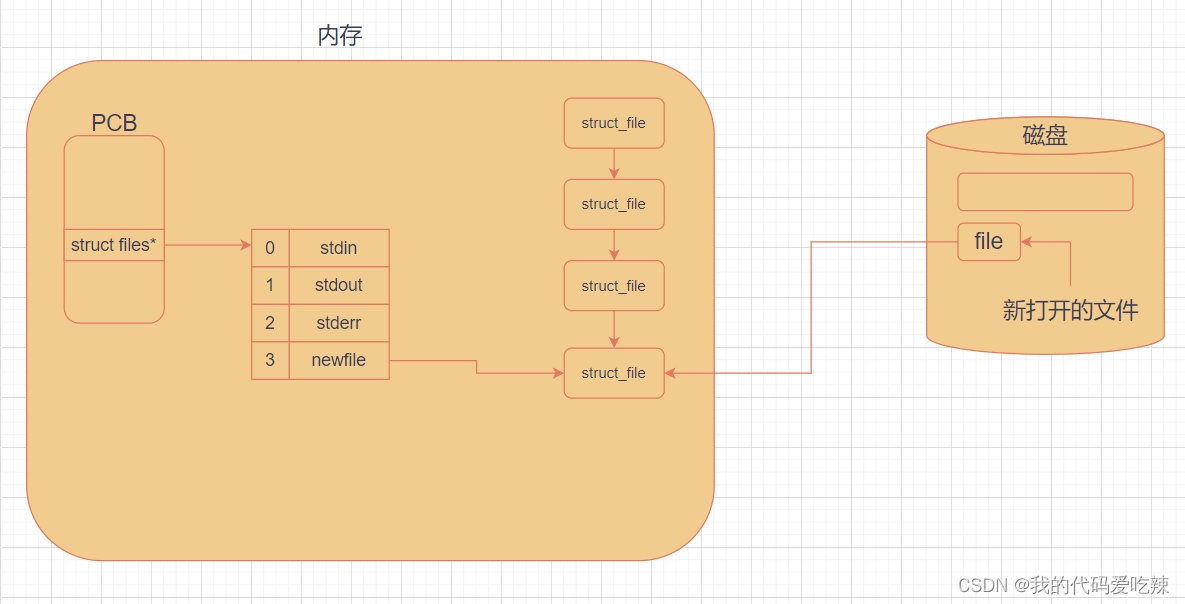
3.文件描述符的分配规则
测试代码:
#include <stdio.h>
#include <string.h>
#include <sys/types.h>
#include <sys/stat.h>
#include <fcntl.h>
#include <unistd.h>
int main()
{
close(0);
int fd = open("testfile", O_WRONLY | O_CREAT, 0666);
close(2);
int fd1 = open("testfile1", O_WRONLY | O_CREAT, 0666);
int fd2 = open("testfile2", O_WRONLY | O_CREAT, 0666);
// 打印文件描述符
printf("%d\n", fd);
printf("%d\n", fd1);
printf("%d\n", fd2);
return 0;
}测试结果:

说明:
- 当我们关闭0,2号文件描述符,0,2文件描述符空着,新打开的文件描述符不再从3开始。
- fd: 0 或者 fd 2 可见,文件描述符的分配规则:在files_struct数组当中,找到当前没有被使用的最小的一个下标,作为新的文件描述符。
三.重定向
1.重定向原理
上述代码如果我们关闭的是1号文件描述符:
#include <stdio.h>
#include <string.h>
#include <sys/types.h>
#include <sys/stat.h>
#include <fcntl.h>
#include <unistd.h>
int main()
{
close(0);
int fd = open("testfile", O_WRONLY | O_CREAT, 0666);
// 如果关闭1号文件描述符
close(1);
int fd1 = open("testfile1", O_WRONLY | O_CREAT, 0666);
int fd2 = open("testfile2", O_WRONLY | O_CREAT, 0666);
// 打印文件描述符
printf("%d\n", fd);
printf("%d\n", fd1);
printf("%d\n", fd2);
return 0;
}测试结果:

说明:
- 本应该输出到显示器的内容,却输出到了文件中。这种现象就叫做重定向。
- 常见的重定向有:>, >>, <,输出重定向,追加重定向,输入重定向。
重定向的本质:

说明:
原本输入到显示器的数据输入到了其他文件,仅仅通过更改struct file*fdarray[ ]对应下标的存储的指针。
2.dup2 系统调用
#include <unistd.h>
int dup2(int oldfd, int newfd)说明:
- oldfd:需要重定向的文件描述符。
- newfd:被重定向的文件描述符。
测试代码:
#include <stdio.h>
#include <unistd.h>
#include <fcntl.h>
int main()
{
int fd = open("./log", O_CREAT | O_RDWR, 0666);
if (fd < 0)
{
perror("open");
return 1;
}
close(1);
// 将fd对应的文件,重定向到1号文件描述符
dup2(fd, 1);
for (;;)
{
char buf[1024] = {0};
ssize_t read_size = read(0, buf, sizeof(buf) - 1);
if (read_size < 0)
{
perror("read");
break;
}
printf("%s", buf);
fflush(stdout);
}
return 0;
}测试结果: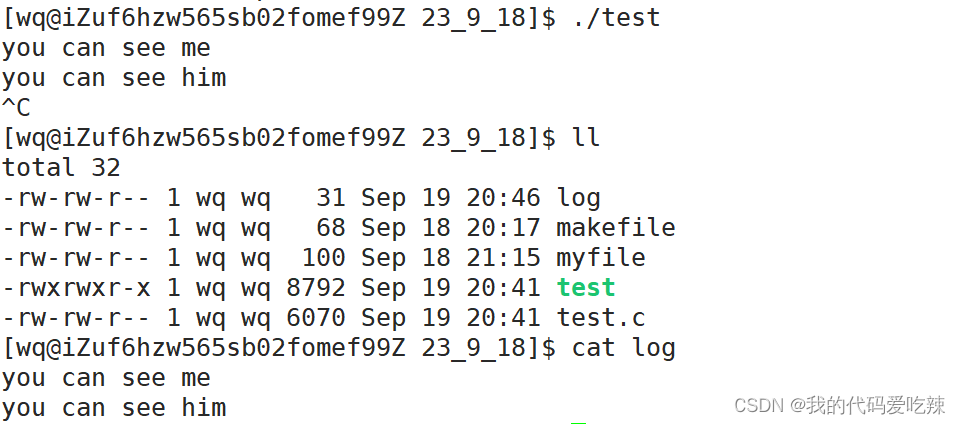
printf是C库当中的IO函数,一般往 stdout 中输出,但是stdout底层访问文件的时候,找的还是fd:1, 但此时,fd:1下标所表示内容,已经变成了./log的地址,不再是显示器文件的地址,所以,输出的任何消息都会往文件中写入,进而完成输出重定向。
四.理解FILE
因为IO相关函数与系统调用接口对应,并且库函数封装系统调用,所以本质上,访问文件都是通过fd访问的。所以C库当中的FILE结构体内部,必定封装了fd。
测试代码:
#include <stdio.h>
#include <string.h>
#include <sys/types.h>
#include <sys/stat.h>
#include <fcntl.h>
#include <unistd.h>
int main()
{
int fd = open("testfile", O_CREAT | O_WRONLY, 0666);
int fd1 = open("testfile1", O_CREAT | O_WRONLY, 0666);
printf("%d\n", stdin->_fileno);
printf("%d\n", stdout->_fileno);
printf("%d\n", stderr->_fileno);
printf("%d\n", fd);
printf("%d\n", fd1);
return 0;
}测试结果:

看一段代码:
#include <stdio.h>
#include <string.h>
#include <sys/types.h>
#include <sys/stat.h>
#include <fcntl.h>
#include <unistd.h>
int main()
{
const char *msg0 = "hello printf\n";
const char *msg2 = "hello write\n";
printf("%s", msg0);
write(1, msg2, strlen(msg2));
fork();
return 0;
}运行结果:

看到这里一切正常,如果我们将输出到显示器的数据,重定向到其他文件中:

我们发现 printf 输出了2次,而 write 只输出了一次(系统调用)。为什么呢?肯定和fork有关!
- 一般C库函数写入文件时是全缓冲的,而写入显示器是行缓冲。
- printf fwrite 库函数会自带缓冲区(进度条例子就可以说明),当发生重定向到普通文件时,数据的缓冲方式由行缓冲变成了全缓冲。
- 而我们放在缓冲区中的数据,就不会被立即刷新,fork之后。
- 但是进程退出之后,会统一刷新,写入文件当中。
- 但是fork的时候,父子数据会发生写时拷贝,所以当你父进程准备刷新的时候,子进程也就有了同样的一份数据,随即产生两份数据。
- write 没有变化,说明没有所谓的缓冲,而是直接写入文件。
综上:
- printf fwrite 等库函数会自带缓冲区,而 write 系统调用没有带缓冲区。
- 另外,我们这里所说的缓冲区,都是用户级缓冲区。其实为了提升整机性能,OS也会提供相关内核级缓冲区,不过不再我们讨论范围之内。
- 那这个缓冲区谁提供呢? printf fwrite 是库函数, write 是系统调用,库函数在系统调用的“上层”, 是对系统调用的“封装”,但是 write 没有缓冲区,而 printf fwrite 有,足以说明,该缓冲区是二次加上的,又因为是C,所以由C标准库提供。
